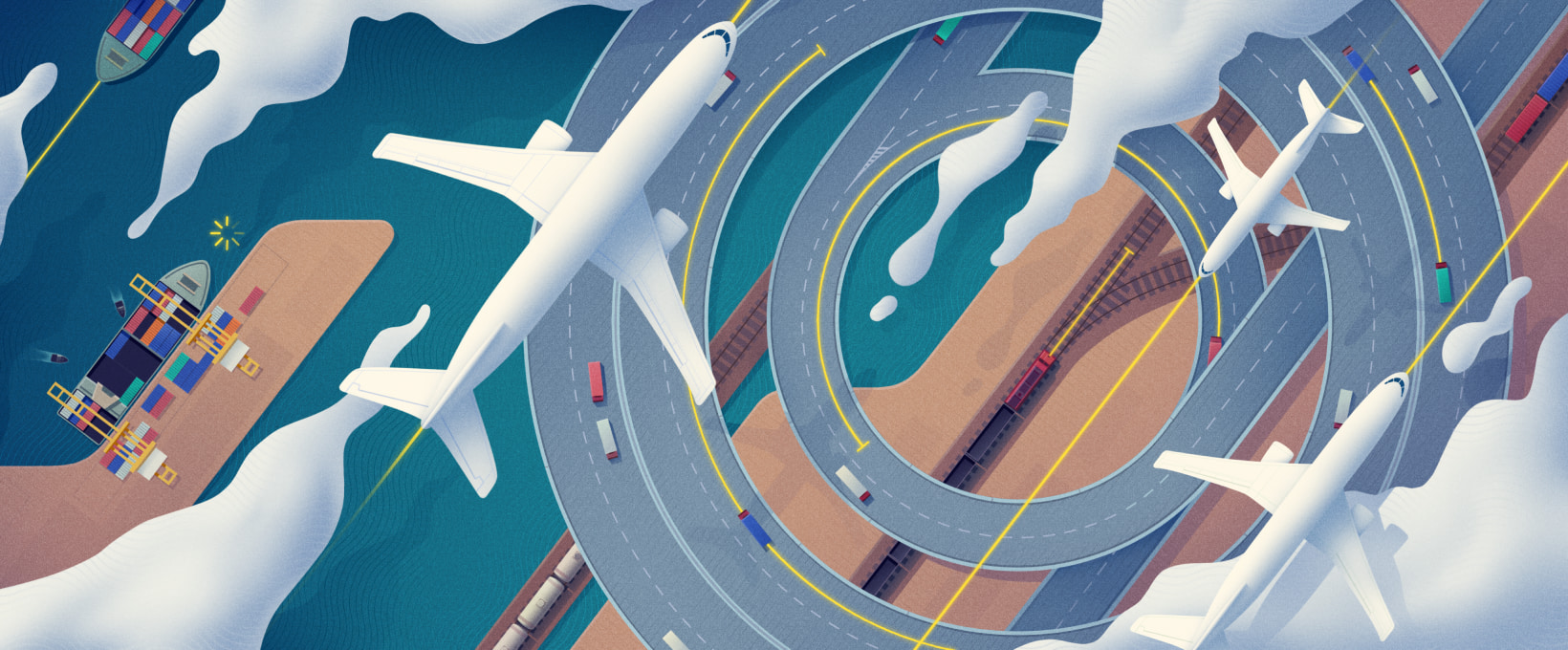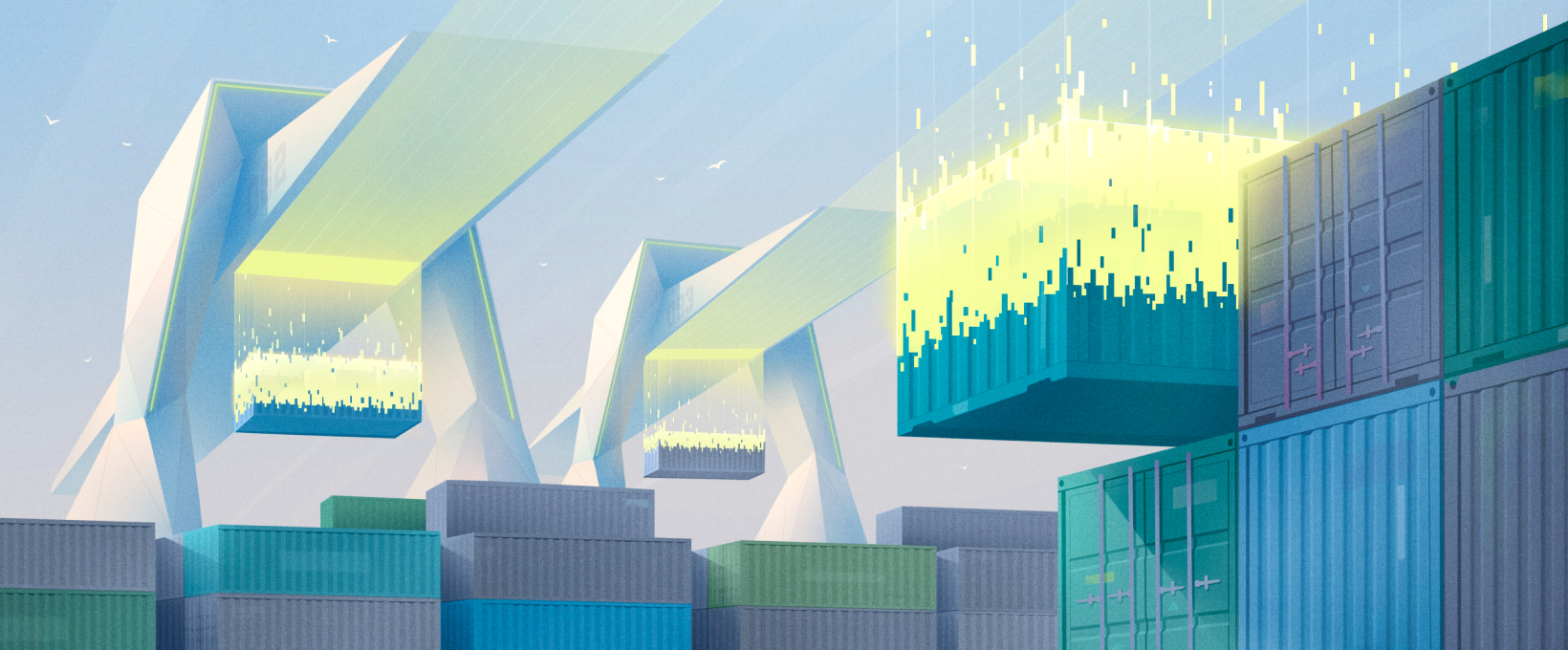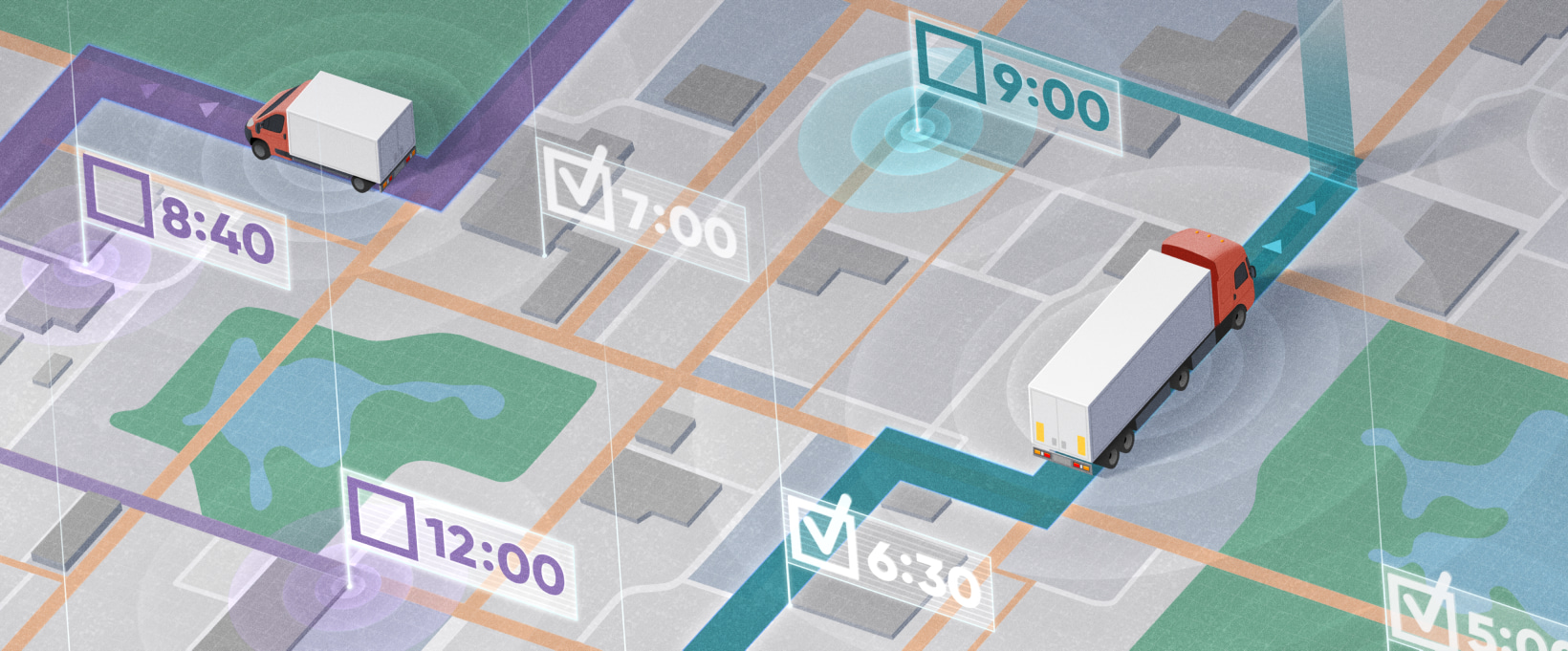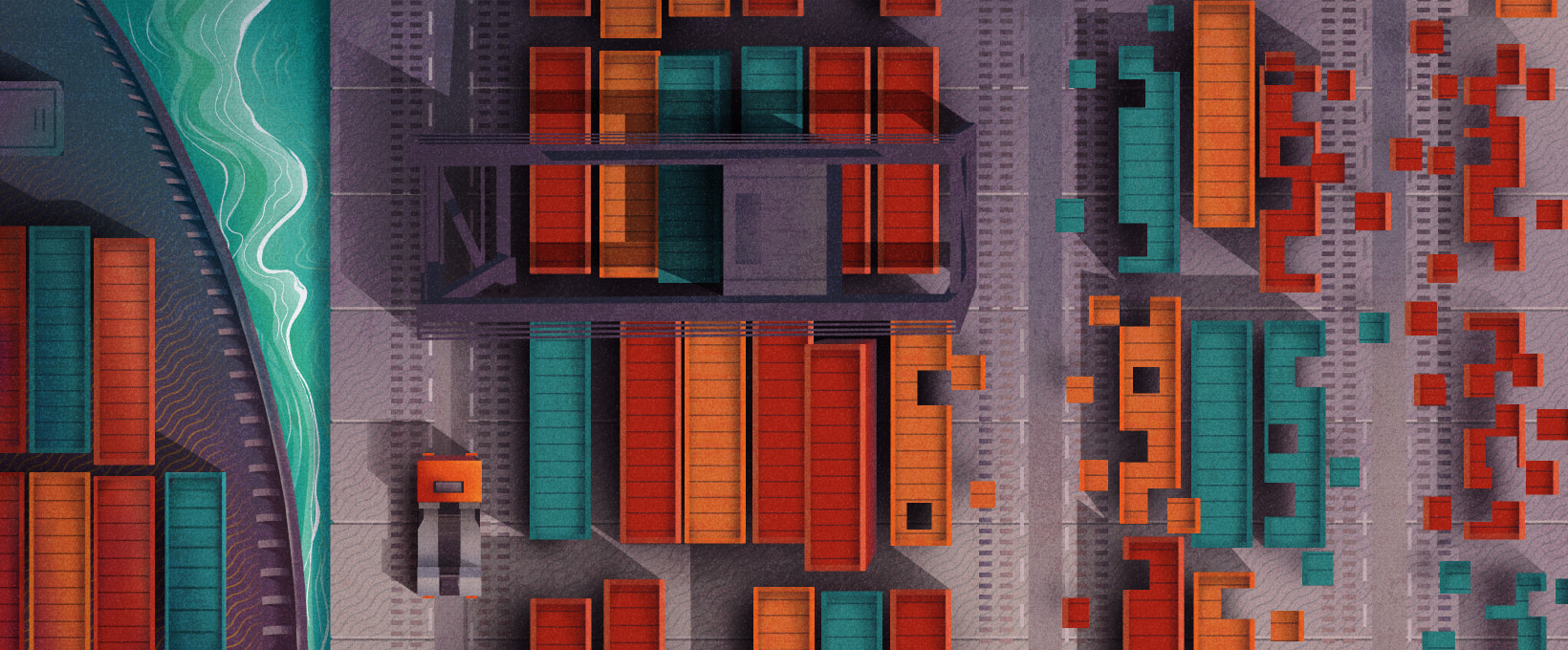- Transportation industry background: digital transformation
- Tech must-haves for transportation and logistics
- Andersen’s capabilities for transportation companies
The logistics industry as a whole and transportation operations in particular are undergoing a significant tech-based transformation. As experts from PwC put it, we are all living in “an era of unprecedented change” caused by digitization, with new technologies aimed at “greater efficiency and more collaborative operating models.” As a custom software development vendor, Andersen is proactively involved in this enormous shift. In this piece, we will highlight the most obvious trends that are taking place and what our IT team offers in this respect.
Transportation industry background: digital transformation
Back in 2018, the global size of the logistics market was estimated by Statista to exceed €5.5 trillion, with the two leading roles played by road freight (both full-truckload and less-than-truckload) and in-house distribution and warehousing. A little later, in 2020, the global logistics market size reached almost $8.6 trillion, or over €7.5 trillion. This purely quantitative growth was accompanied by qualitative changes.
PricewaterhouseCoopers stresses the following patterns:
-
Private individuals and companies now tend to take it for granted that they will receive their goods orders as soon as possible.
-
Even more challengingly, end-consumers now expect to get what they want either at a low delivery cost or at no delivery cost at all.
-
Finally, the manufacturing process is transforming into a more customized one. When coupling this trend with widely dispersed and remote production and logistics centers, it becomes obvious that more and more sophisticated tech solutions are needed to handle these challenges.
Then, the COVID-19 pandemic hit, generating new problems for the transportation and logistics industry. According to the World Bank, lockdowns and the resulting supply chain disruptions took a heavy toll on the market players. While the negative consequences were most severe for small players - due to lack of tech means, contingency plans, business continuity measures in place, etc. - the top market players have to face a negative impact too. After all, even giants cannot escape “delivery delays, congestion, and higher freight rates.”
Finally, transportation and logistics cannot ignore the ongoing shift to a greener global economy. This policy is going to impose more requirements and restrictions on the market players to make them save resources and reduce their environmental footprint.
Tech must-haves for transportation and logistics
Thus, experts of Lux Research, among others, have recently outlined the following three priorities:
-
Visibility, i.e. a tech-backed capability to track, see, and monitor goods being delivered in real-time. Among other things, it means a need for live GPS tracking, geofencing, and route planning optimization.
-
Sustainability, i.e. greater environmental-friendliness with reduced emissions, which means, apart from everything else, a need for more detailed and data-intensive freight management systems capable of taking those priorities into consideration.
-
Agility, i.e. an ability to quickly adapt to sudden changes so that goods still can be delivered on time or with minimum delays, which implies a need for better booking and reservation systems.
In light of the above needs, the industry is far from being inert. Companies invest more and more resources in new ways and patterns. As the NMSC consulting group says, the global connected logistics market, understood as being able to “integrate multiple devices into a single operational platform to enable informed decision making regarding the logistics process,” is likely to exceed $41.5 billion in 2030, compared to just $21.4 billion in 2019.
What are the exact fields where shippers need more support from IT? While individual situations inevitably differ, a recent global survey indicates the following range of IT-based capabilities that market players need now:
- Transportation management in terms of scheduling — 51% of respondents;
- Transportation management in terms of planning — 51%;
- Cloud-based tools — 49%;
- Transportation sourcing — 40%;
- Distribution center and warehouse management solutions — 38%;
- Advanced analytics and data-mining tools — 38%;
- Web-based tools for booking, tracking orders, handling billing processes, and managing inventory — 36%;
- Supply chain planning and customer order management in both directions — 30%.
Andersen’s capabilities for transportation companies
If you feel you need to upgrade your current IT solution used to handle transportation business activities — or even order a new one from scratch — we invite you to check out this section of our website. As you will see, Andersen’s team of tech experts is in the right position to match any feasible tech challenge in this respect, including but not limited to:
- Transportation management software with custom-built TMS and fleet management tools;
- Order management software with CRM systems for order management, reverse logistics solutions, and order fulfillment tools;
- Warehouse management software development and modernization;
- Inventory management software, including cloud-based IMS services.
Contact us so that we can thoroughly assess your market niche, business needs, and transportation routes to propose the best possible IT tool!






